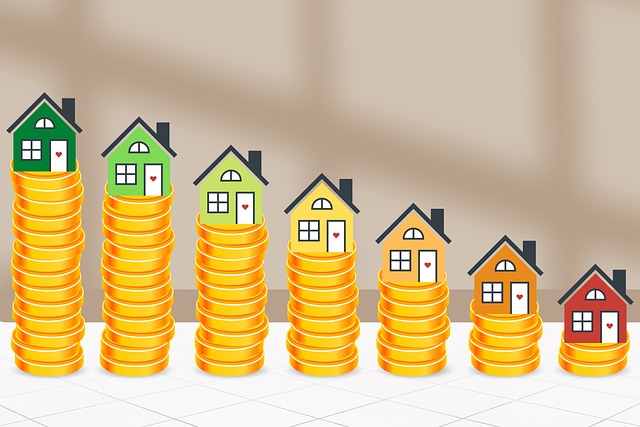The Importance of Automating Savings to Reach Financial Goals
Understanding the principles of financial planning opens doors to financial freedom. When people think about saving for the future, they often think it requires a lot of discipline. But what if I told you that automating savings can relieve some of that pressure? By setting up automatic transfers from your checking account to your savings account, you are essentially paying yourself first. This simple action provides a safety net and allows you to work toward your financial goals more effortlessly.
Imagine this scenario: It’s payday, and your hard-earned money deposits into your account. Instead of seeing that balance and being tempted to spend, automation directs a portion of those funds straight into your savings. Honestly, this prevents the age-old temptation of “It’s okay, I can save next month” from rearing its ugly head. The magic of automating savings is that it creates a system that helps you resist spending temptations. Instead of making saving feel like a burden, you actually turn it into an effortless activity. Once you set it up, you can forget about it and allow your savings to grow.
Moreover, integrating automating savings into your financial planning can also help you meet specific financial goals. Whether it’s a dream vacation, a down payment on a house, or building an emergency fund, having a clear target makes saving feel less abstract. With a savings goal in mind, you’ll be more motivated to engage in regular savings practices. In this way, automating becomes your partner in reaching those financial objectives faster. Think about a savings goal that excites you. Wouldn’t it feel fantastic to know you are consistently adding to it without having to think about it every month?
The Benefits of Automating Your Savings
Let’s delve into the myriad benefits of automating your savings. One significant advantage is the reduction of decision fatigue. Each time you are faced with a financial choice, it can lead to mental exhaustion. By automating your savings, you eliminate that monthly dilemma of whether to save or spend. This also simplifies your budgeting process, as you can plan your expenses based on what remains after your savings are automatically deducted.
Additionally, automated savings help nurture a habit of saving. They encourage a consistent approach to savings, making it feel natural rather than forced. When people automate their savings, they stop equating spending with happiness. Instead, they start to experience the joy of watching their savings grow. The sense of accomplishment can be incredibly gratifying, providing motivation to add to those savings, escalating your financial goals at a faster rate.
Furthermore, many online banking services and financial institutions offer options for automating savings with features that allow you to round up your purchases. For instance, using this ’round-up’ feature, whenever you spend money, the transaction amount rounds up to the nearest dollar and sends the difference to savings automatically. This delightful magic of “savings with spending” means you save without even feeling it, almost like an effortless bonus. Every little bit you can save adds up over time, creating a surprising lump sum that fuels your financial goals.
Setting Up Your Automated Savings
Now, let’s discuss how you can set up your automated savings effectively. First, evaluate your monthly income and expenses. It’s crucial to understand how much money you receive and what your fixed and variable costs are. This assessment allows you to determine how much you can afford to automate each month without jeopardizing your daily living expenses. Once you’ve established that, choose a fixed amount to automate. It could be a percentage of your paycheck or a set dollar amount—whatever suits your lifestyle best.
Most banks provide options to automate savings with just a few clicks. You’ll want to log into your bank account, navigate to the savings transfer settings, and follow the prompts to set up automatic transfers. This step is crucial: select a transfer date that aligns well with your paycheck schedule, ensuring those funds go into savings right when you receive them. Remember that starting small is perfectly fine; as your financial situation evolves, you can increase your automatic transfer amount incrementally.
Also, keep an eye on progress. Periodically review your savings account. You want to ensure you are meeting your savings goal and tweak your automation if required. Automatic savings does not mean it’s a “set it and forget it” situation. Life can present unexpected expenses. Regularly reviewing your financial commitments enables you to adjust your automated savings seamlessly, making it a flexible component of your overall financial plan.
Common Challenges with Automating Savings
While automating your savings has numerous advantages, it’s essential to acknowledge potential challenges. One common issue is underestimating your needs. During the setup, you might select an amount that seems manageable, but unexpected expenses might arise. It’s easy to overlook small, periodic expenses that don’t occur monthly, like insurance premiums or annual subscriptions. This oversight can lead to cash flow issues, making it essential to have a comprehensive understanding of your spending habits beforehand.
Another hurdle could be accessing savings when the urge to splurge arises. Since your money is tucked away, it may feel out of reach. Therefore, having a predefined rule about when you can dip into your savings becomes crucial. Do you save for emergencies only? What counts as an emergency? Having clarity on what your savings are meant for can help you to resist the temptation to go off track.
In some instances, people feel that automating savings takes away the element of control. They worry about handing over command to an automatic system that dictates their finances. But here’s the truth: you are still in charge. The automation is a tool designed to facilitate your savings journey. You retain the right to modify it as you see fit. Think of it as employing a professional assistant to handle a detailed aspect of your financial life—one that frees you to focus on broader financial strategies and goals rather than getting bogged down by saving minutiae.
How Automating Savings Influences Your Financial Habits
After automating your savings, you may notice a shift in your financial habits. One notable change is the perception of money itself. Most individuals feel liberated to have that portion of their income consistently flowing into savings rather than being tempted to spend it on immediate desires. Once you adjust your mindset and view savings as a non-negotiable expense, multiple doors to wealth-building open up. This transformation has a ripple effect—it encourages you to budget better and live within your means, creating an overall healthier financial life.
The simple act of automating your savings tends to reinforce other positive financial habits. People who automate their savings often start to track their spending more diligently. They become increasingly aware of impulses and triggers that lead to unnecessary expenses. It fuels thoughtful financial decision-making, fostering a deeper understanding of the relationship between your income, expenses, and savings. With this awareness and intention, saving becomes less of a chore and more of a lifestyle choice.
Furthermore, automating your savings also has a beneficial impact on your planning for future goals. You’ll find yourself more willing to invest in opportunities or fund passions you may have previously sidelined due to a limited perception of financial flexibility. The growing balance in your savings account serves as a constant reminder of your dreams—whether it’s a new home, an exceptional vacation, or education. Thus, automation builds momentum, enhancing your pathways to financial stability.
Real-Life Examples of Successful Automated Savings
Real success stories can illustrate the practical benefits of automating savings. Consider Julie, a young professional who never quite managed to save consistently. Frustrated, she decided to automate her savings by directing $150 from each paycheck into a dedicated savings account for travel. Within just six months, she had saved enough for a two-week vacation abroad. The best part? Julie didn’t feel the pinch of this savings effort, as it became a routine part of her budgeting process.
Then we have Mark and Linda, a couple striving to buy their first home. Faced with rising property prices, they automated monthly transfers of $500 into their home-buying fund. Initially, the sum felt daunting, but they soon found themselves adjusting their expenditures. Over two years, they accumulated a significant down payment and fulfilled their objective. Automation not only facilitated their savings but also strengthened their ability to communicate and align on their financial goals.
Lastly, let’s discuss Andrew, a college student burdened with debt. He earned a part-time income but struggled to save. Seeking balance, Andrew set up an automatic investment account that allowed him to invest $50 every paycheck. Over time, this amount grew into a healthy nest egg, yielding dividends that complimented his income. Today, Andrew exercises informed investments and has learned to manage his money effectively, largely due to the confidence gained through automating his savings.
Conclusion
Automating savings can significantly enhance your financial planning and help you reach your financial goals. It simplifies the saving process, encourages consistent habits, and helps you avoid pitfalls of temptation. While some challenges exist, the benefits far outweigh the downsides. By taking action to automate your savings today, you set yourself on a path to financial success. The journey is not just about socking away money—it’s about growing, learning, and building a financial future you can celebrate.
FAQ
- What is automating savings?
- Automating savings involves setting up automatic transfers from your checking account to your savings or investment accounts, allowing you to save without needing to manually perform the action each month.
- Why should I automate my savings?
- Automating your savings can help you reach your financial goals, reduce spending temptations, and create consistent saving habits without burdening you with decisions every month.
- How do I set up automated savings?
- You can set up automated savings through your bank’s online portal. Start by evaluating your income and expenses, determine the amount to save, and then schedule regular transfers from your checking to your savings account.
- Can I access my savings if I automate them?
- Yes! While the purpose of automating savings is to grow that fund, you can still access your savings should you need them. Just be mindful of your goals when you decide to withdraw funds.
- What happens if I want to change the amount I automate?
- You can easily update or change the amount you automate at any time through your bank’s online portal. As your financial situation evolves, it’s wise to adjust your automatic transfers accordingly.



